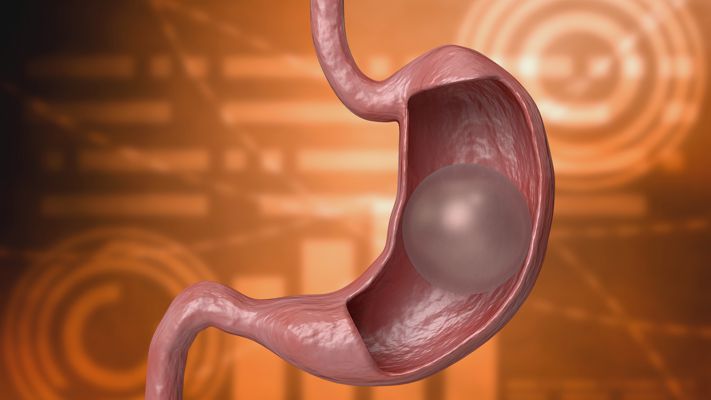Gastric Baloon
Gastric Balloon, also called Endoscopic Intragastric Balloon, is a non-surgical weight-loss procedure which involves the insertion of a specialized balloon inside the stomach to occupy space and limit the food carrying capacity of the stomach. This makes you feel full sooner and limits your intake to smaller portions. The procedure is temporary and the balloon is usually removed after a period of 6 months. Obesity can turn into a serious problem if it remains untreated. In fact, millions of people are suffering from this disease and it is only right to contact a doctor to check for the possible solutions, especially when exercising and diets fail to so the trick. Therefore, other weight loss methods come into play. Having a consultation should be helpful. It will determine which surgical method is best for you.
Gastric Balloon Procedure
A very popular choice for weight loss. In this procedure, a balloon is put inside the stomach in order to decrease the quantity of consumables the patient used to take. The balloon will give the patient a sense of a half-full stomach. It is important to note that the balloon does not stay permanently.
Disease Overview
Obesity is an excess of total body fat which results from caloric intake that exceeds energy usage. A measurement used to assess health risks of obesity is Body Mass Index or BMI.
Gastric Balloon is a Non-Surgical Weight Loss Treatment recommended for those individuals who are not good candidates for weight loss surgery. Indications and Contraindications.
The gastric balloon is indicated in the following patients:
- BMI of 30-40 kg/m2.
- Unable to lose weight with exercise and diet.
- Willing to participate in a medically supervised lifestyle and behavior modification program.
The weight loss system is contraindicated in the following patients:
- Have previously undergone bariatric surgery.
- Are suffering from inflammatory diseases of the GI tract, large hiatal hernia, structural abnormalities in the pharynx or esophagus, and are prone to upper GI bleeding.
- Allergy to materials used during the procedure.
- Alcoholics or drug abusers.
- Women who are pregnant or breastfeeding.
The placement of the Gastric Balloon is carried out as an outpatient procedure.
- The procedure is performed endoscopically under sedation.
- The deflated gastric balloon is attached to an endoscope, a narrow lighted tube with a camera attached, which is guided through your mouth and into the stomach.
- Once in proper position, your doctor inflates the balloon with saline and a dye, or gas to the desirable size.
- While the endoscope is removed, the balloon is retained in the stomach.
- The entire procedure takes about 15 minutes to complete.
- You will be able to leave the hospital soon after.
The balloon is temporarily left in the stomach for about 6 months, following which it is removed. The removal of the gastric balloon is also performed under sedation. This procedure is incisionless. This explains why it is a very popular solution for obesity.
Projected Results:
Following the procedure, your throat might feel a little sore and you may experience some cramps and nausea as your stomach adjusts to the balloon. You will be on a liquid or soft diet for a few weeks. This is followed by 6 months of supervised diet and behavior-modification that will be taken care of by a multidisciplinary team of nutritionists, gastroenterologists, and medical weight loss physicians. This helps you to continue eating healthy and staying active, which will greatly influence results.
Each of the bariatric operations has a different amount of total body weight that a patient can expect to lose within 12-18 months after surgery.
- Up to 30 percent with a gastric sleeve procedure.
- To 35 percent with a gastric bypass procedure.
- to 20 percent with a gastric balloon procedure.
Note: If we take a look at the Middle East, we will notice that none of the Middle Eastern countries could achieve balance between tourism and health services like Turkey did. It has become the main magnet that draws tourists’ and health service seekers’ attention. That’s due to the reliable and affordable services both tourists and patients have been receiving over the years.
How Much Does Gastric Baloon Procedure Cost In Turkey?
Costs vary according to the reason for the surgery and its complexity. Factors influencing cost include: Your total cost, therefore, may include the likes of the surgeon’s fee, prescriptions for medication, post-surgery garments, medical tests, surgical facility costs, and anesthesia fees. Prices for a Gastric Baloon will differ from patient-to-patient and surgeon-to-surgeon, depending on numerous factors. This includes the geographic location of the office, the type of procedure used, and the experience of the surgeon. The surgeon’s level of experience and your comfort with him are just as critical as the final cost of the Gastric Baloon surgery.
The cost of the medical trip includes:
1- Transport service: A car and a driver will be with you throughout the medical trip, all transfers between the airport, hotel, hospital.
2- The translation service: includes a translator who will accompany you to translate into the French language (English, Russian, Arabic, Spanish).
3- It includes all the analyses, examinations and blood tests before the operation to ensure your state of health and your preparation for the operation
4- Includes the cost of the process itself.
5- It includes all the necessary medications and treatments for the recovery period after the operation.
6- It includes all visits and checks with the doctor after the operation to monitor the state of your health.
For more information, please contact us.





